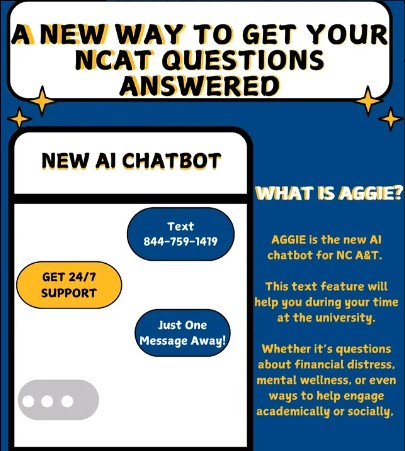As the sixth leading cause of death in America, over five million people have been diagnosed with Alzheimer’s disease. By 2050, nearly 16 million individuals are projected to have Alzheimer’s.
Exactly what is Alzheimer’s?
The Alzheimer’s Association reports that Alzheimer’s is the most common form of dementia, accounting for 50-80 percent of dementia cases. Alzheimer’s causes problems with memory, thinking and behavior.
Goldie Byrd, Dean of the College of Arts and Sciences and Professor of biology at North Carolina A&T, serves as the principal investigator on Alzheimer’s Grants for the African American Alzheimer’s Disease research Study Team. She notes that anyone can be at risk for Alzheimer’s.
It crosses all races and genders, but African Americans are twice as likely, Hispanics are one and a half times as likely, and women are more likely to have this disease than their white counterparts.
Byrd said that currently, there is no research to explain why this is so, but the thought is that there are
environmental factors that contribute to this diagnoses.
“African American’s are more likely to have problems associated with vascular disease,” says Byrd. “Women have it more than men, but there is no genetic cause that we know of. It could be that
women tend to live longer and the number one risk factor for the disease is age so people over the age of 80 have a very high risk of getting the disease.”
Vascular diseases such as high blood pressure, cardio vascular disease, obesity, high cholesterol and stress are issues believed to influence the diseases susceptibility and it could be a interplay between environments and genetics that predispose certain groups, according to Byrd.
Although people over 80 are at very high risk, Byrd says that there are individuals who get Alzheimer’s in their 30’s and 40’s. People who get the disease in their 30’s and 40’s have Early Onset Alzheimer’s disease. Those who are diagnosed at age 60 or older are considered to have Late Onset Alzheimer’s.
Besides age, there have been three genes identified in individuals with Early Onset Alzheimer’s that set them apart from those with Late Onset Alzheimer’s putting those who have the genes Presenilin-1, Presenilin-2 and Amyloid Precursor Protein at a higher risk for Early Onset Alzheimer’s than those without.
One reason Byrd sees Alzheimer’s as an issue is because of the effect it has on caregivers. The Alzheimer’s Association reports that in 2013, the direct cost of caring for those with Alzheimer’s will total an estimated $203 billion and $1.2 trillion by 2050.
In 2012, 15.4 million caregivers gave more than 17.5 billion hours of unpaid care that added up to $216 billion. Byrd says that caregivers need help with finances.
“If a person is going to work, you may be late because you have to wait for someone to come in and take care of your loved one,” said Byrd. “You may have to come out of the work force altogether and that costs the government in lost wages.”
Byrd also mentioned the cost of placing a loved one in a long-term care facility, stress the caregiver may have, stress on the caregiver’s family and the caregiver’s health. She notes that caregivers often neglect
their health while taking care of someone else and die before their patient does. Help is available for caregivers. Byrd suggests contacting your local Alzheimer’s Association as well as the Department of Health and Human Services to find out what resources are available to you in your area.
Jessica Garris, a senior mechanical engineering major from Charlotte, has a grandfather with Alzheimer’s.
Growing up, she would get frustrated and would not want to talk to him because of his loss of memory. It
hurt her that she could not have long conversations with him or that he could not remember her accomplishments. Garris now understands this disease and says that her whole family has to look after him to make sure he is ok. There was an instance where her grandfather drove from Charlotte to Myrtle Beach,
S.C. as he forgot his way home.
Garris’ mother and aunt had to come to his aid in the middle of the night and made sure he was all right.
“We all have to take into consideration his illness and try to help him stay up to date with things and keep talking to him so he doesn’t forget who we are,” said Garris.
Earlier in 2013, A&T received $1 million from Merck & Co. Inc. to open a Center for Outreach Alzheimer’s, Aging and Community Health. Byrd says that the center hopes to open in the next few months and go across North Carolina into communities to do outreach, walks, health fairs and town hall meetings.
There will soon be a curriculum offered at A&T that will certify students in gerontology.
Byrd’s research team of 15, along with 12 students, participated in the Walk to End Alzheimer’s on Saturday, Oct. 12.
Byrd says the walk is fantastic as it raises awareness and money. She hopes that one day A&T
will have 500 people to participate in the walk.
Garris believes that there are not many people who know about this disease or pay attention to it.
“I think a lot of people brush it off as not really an important illness until someone close to them gets Alzheimer’s, then they see the importance,” said Garris.
Her hopes are that it becomes well-known and of more importance so that more can be done to help individuals with Alzheimer’s.
Porcha Taylor is another student who has been affected by the disease. Taylor’s grandmother passed away as a result of the dementia. She currently serves as Miss Triad USA and is running for Miss North Carolina
USA.
“In my platform for Miss North Carolina USA, I want to identify and challenge the mindset of the younger generation, by also being an advocate for Alzheimer’s [and] I want to reach out to the younger generation by letting them know that the mind is a terrible thing to waste,” said the senior journalism and mass
communications major. She along with other students from N.C. A&T participated in the walk on Saturday.
Currently, there is not a cure or a drug to slow down the progression for Alzheimer’s, but Byrd remains hopeful saying that the outlook for this disease is very good. She believes there are many smart people conducting research in a relentless manner.
She believes that the impact on caregivers will get worse because people are living longer.
Unless there is an intervention for the diseases like Alzheimer’s, families of all races and ethnicities will be impacted.
“It would be great to slow it down, but I would really love to see in my life time a cure,” said Byrd.
Yasin Temple contributed to this article.
— Email Kimberly at kn_ [email protected] and follow The Register on Twitter @TheATRegister
- Kimberly Fields, Register Reporter






